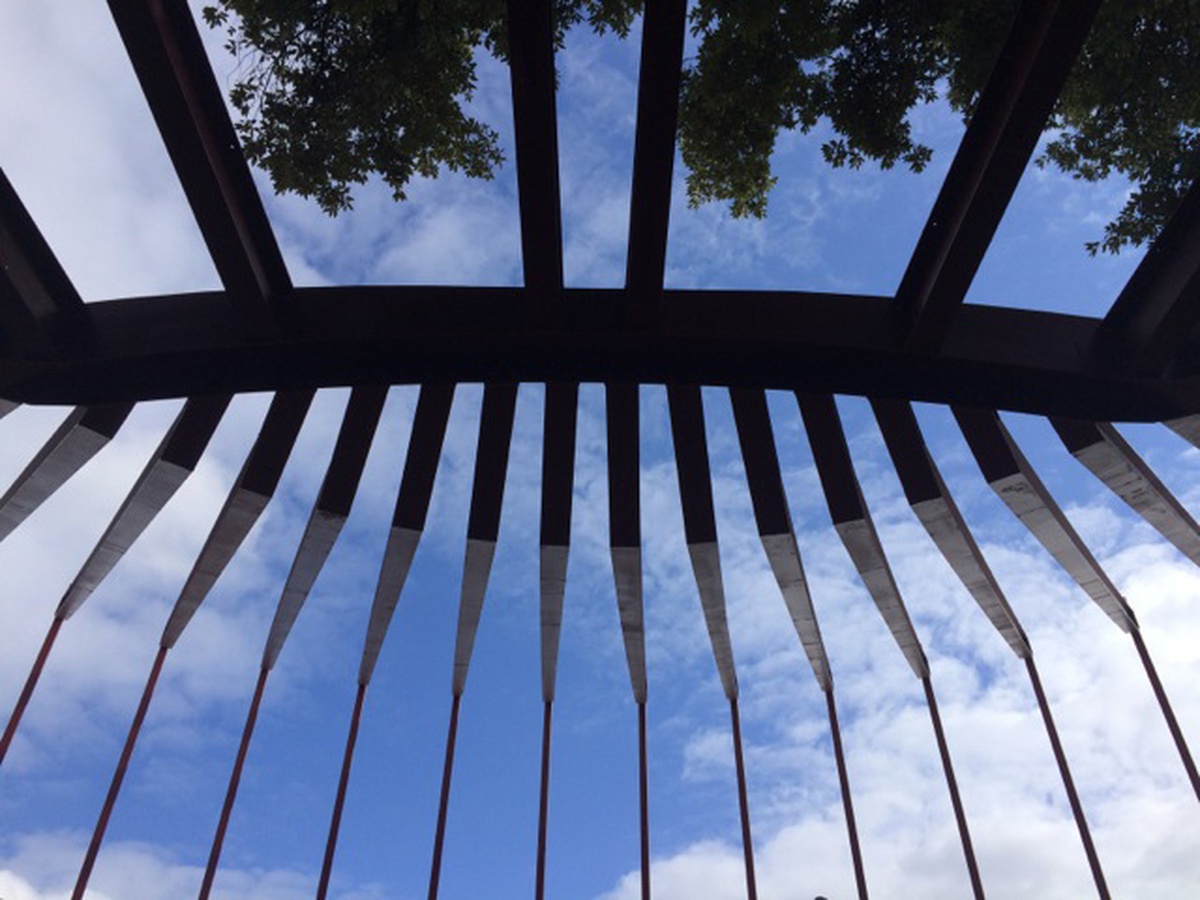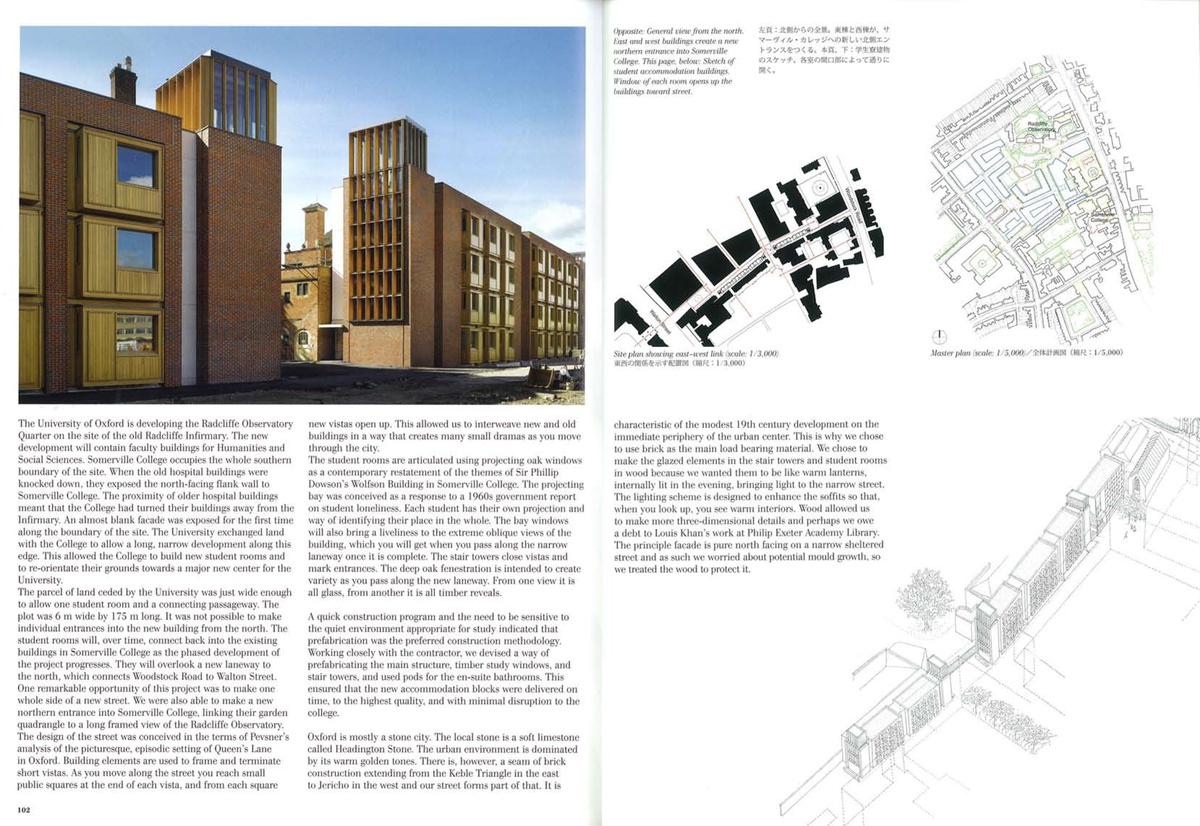NAZRIN SHAH BUILDING – STEELWORK
JULY 2015

Just over two years since our first tentative steps towards imagining what sort of space a new auditorium for Worcester College might possibly be like, we find ourselves enclosed within a spidery sketch, looking up to the trees through a skeletal enclosure of steel. We watched in excitement as our drawings were scribed across the site, first in neon spray paint and little red sticks, later excavated into deep ravines. We pick our way across the lines that had become so familiar on paper and are now concrete obstacles in a muddy field. The reality of this transition only became real as we stood looking across at the steel columns in this picture. They map out the positions of the stone fins that radiate around the curved facade of the new auditorium, with the sloping beams above us silhouetted against the bright July sky marking the future locations of the sculpted folds to the soffit.
A+U FEATURE ON SOMERVILLE COLLEGE ACCOMMODATION
MAY 2014

The Japanese journal a+u has published an account of the practice’s student accommodation for Somerville College, Oxford. The theme of this month’s publication is ‘New Landscapes of Wooden Architecture’ and features an international selection of projects that explore new aspects of wood technology and its potential within cities. The article gives a description on the themes and processes behind the project, placing it within the context of the historic university city and the surrounding Radcliffe Infirmary Quarter.
It is illustrated with working details of the bespoke timber glazing for the stair tower lanterns, as well as the prefabricated timber projecting bay window units for the student bedrooms, with their integral desk and bench seat overlooking the street.
‘We chose to make the glazed elements in the stair towers and student rooms in wood because we wanted them to be like warm lanterns, internally lit in the evening, bringing light to the narrow street…Wood allowed us to make more three-dimensional details…we owe a debt to Louis Kahn’s work at Philip Exeter Academy Library.’ NM

